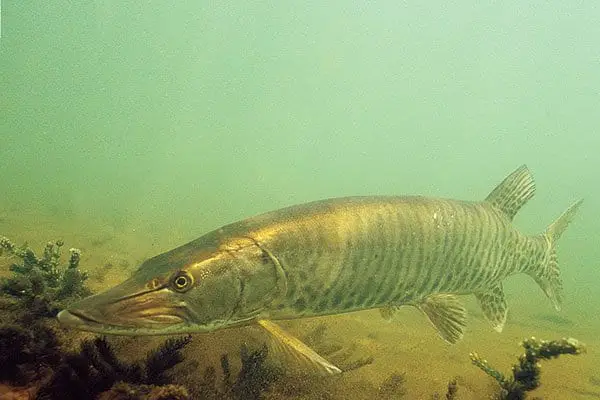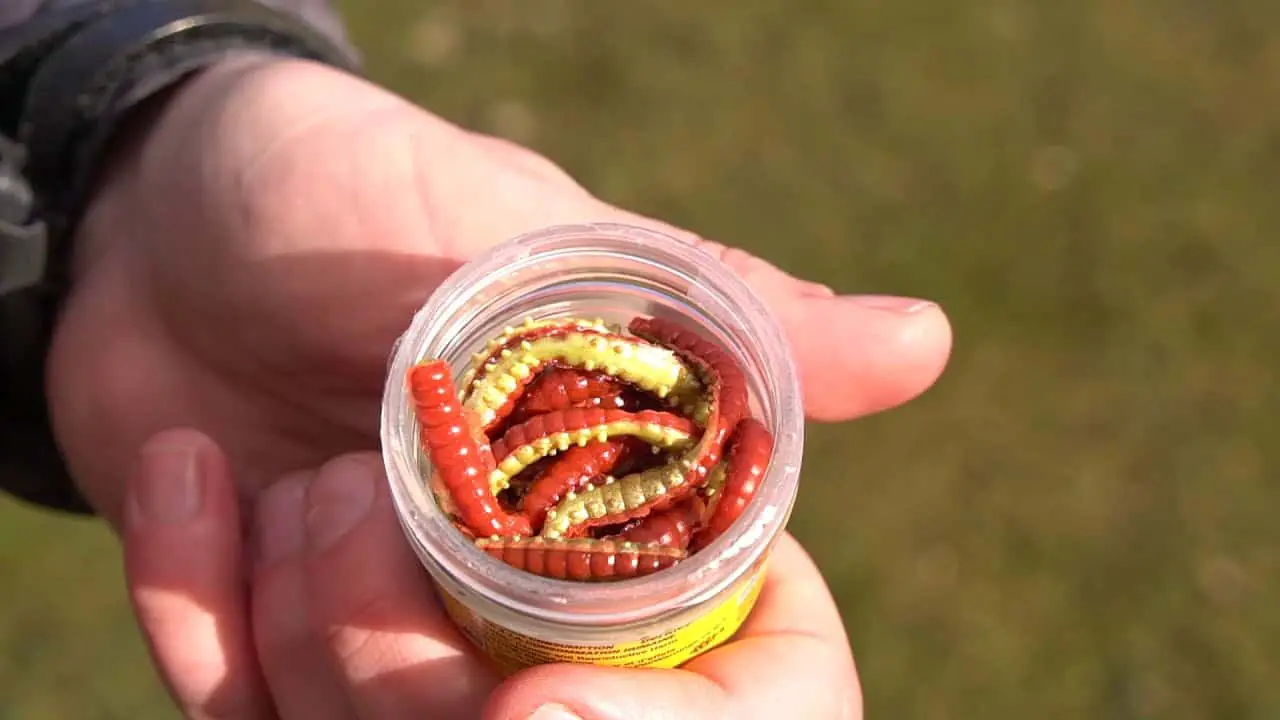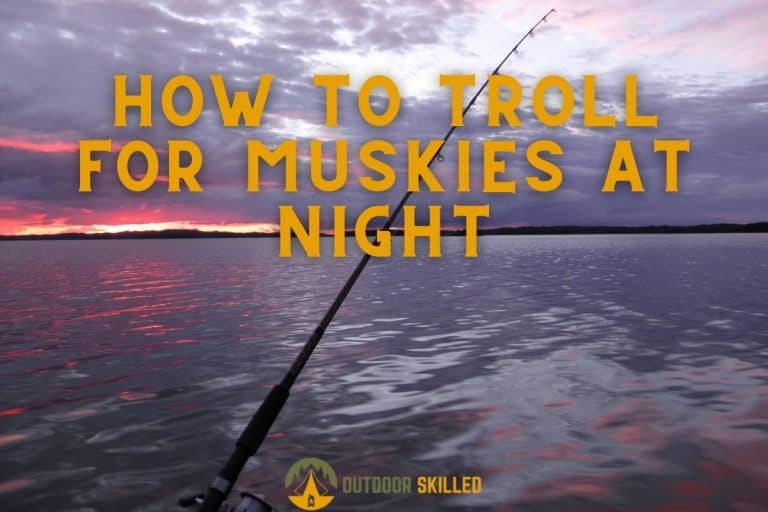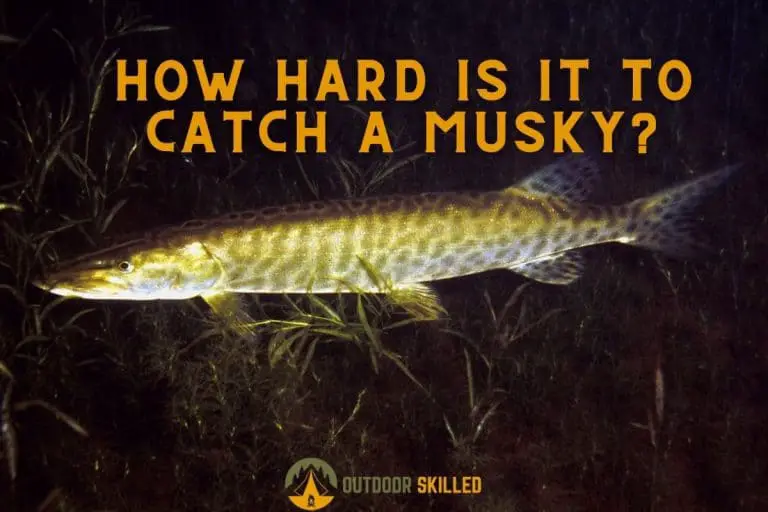The 6 Best Musky Lures in 2023 That Attract Muskies Like Magnets
Musky fish are known by multiple names such as Muskies, Muskellunge, Muskelunge, Muscallonge, Maskinonge, or Milliganong. They’re also famously known as the fish of 10,000 casts. That is because it takes a great amount of dedication to be successful in catching them.
Out of all freshwater fish species in North America, muskies may be the most difficult to catch for beginners, but it’s not completely impossible. You just need to know where to locate muskies and the right kind of gear to use when targeting them. This includes rods, reels, lines, and most importantly lures.
Musky lures come in different actions, shapes, sizes, and weights. Some of these lures are easier to use than others, but when used properly, they can be very effective. To make your choice easier here’s a compilation of the best musky lures that are available on the market
| Product Name | Weight | Hook Type |
|---|---|---|
| Mepps Magnum Musky Killer Bucktail | 1.75 Ounces | No Hook |
| River2Sea Whopper Plopper | 1.12 Ounces | Dual Treble Hooks |
| Haggerty Jointed Muskie Lure | 1.2 Ounces | One Single Hook |
| Musky Mayhem’s Double Cowgirl | 2.8 Ounces | Dual Treble Hooks |
| BlitzBite Multi Jointed Swimbait Muskie Lure | 3 Ounces | Dual Treble Hooks |
| Chaos Tackle Medussa | 4.25 Ounces | One Treble Hook |
Table of Contents
List of the Best Musky Fishing Lures in 2021
1. Best Overall – Mepps Magnum Musky Killer Bucktail

Mepps Magnum Musky Killer Bucktail is one of the top-rated musky lures on the market. The design is simple and easy to work and retrieve which makes it ideal for beginners.
It features a solid brass spinning spoon and a flashy multi-colored tail that will grab the attention of Muskies and get them to bite. It’s available in many colors and sizes to suit different water conditions.
Pros Vs Cons
The Pros
- It’s made from high-quality durable materials
- It’s available in a variety of colors and sizes
- It’s easy to work and retrieve.
- It will effectively grab the attention of muskies
The Cons
- It’s not ideal for fishing in weeds
Bottom Line
Mepps Magnum Musky Killer Bucktail is the perfect choice if you’re looking for a high-quality lure that’s easy to work and will grab the attention of musky fish.
2. Second Runner – River2Sea Whopper Plopper

Another top-rated lure for musky fishing is the Whopper Plopper from River2Sea. It’s designed to mimic the movement of dying baitfish on the surface to effectively draw the attention of Muskies.
It features a flashing and swirling tail and two strong treble hooks that will be able to withstand muskies. It has excellent casting abilities and can be worked at a wide range of speeds. It’s perfectly tuned right out of the box, and it is available in a variety of sizes and colors.
Pros Vs Cons
The Pros
- Its tail mimics baitfish to grab a musky’s attention
- It’s available in a variety of colors and sizes.
- It has excellent casting abilities.
- It features two strong treble hooks.
- It can be worked at a wide range of speeds
The Cons
- The material used to make the tail is not very durable
Bottom line
The famous Whopper Plopper lure is the best choice for you if you’re looking for a reliable lure that you can work with speed and consistency.
3. Best on a Budget – Haggerty Jointed Muskie Lure

This Haggerty Jointed Muskie Lure is of the best lures to grab muskies’ attention, especially if you’re on a budget. It’s available in multiple colors and sizes to suit different water conditions and it offers many great qualities at an affordable price.
It’s designed with joints that allow the lure to move naturally in the water to mimic the movement of real fish. It also features a bright flashy-colored tail made up of grizzly feathers and deer hair. The tail hides a string single hook that’s made up of black nickel material which can handle the hard strikes of muskies.
Pros Vs Cons
The Pros
- It’s designed with a jointed body to increase action
- It features a strong well-hidden single hook
- It’s made from highly durable materials
- It’s available in multiple colors and sizes
The Cons
- Its tail might get stuck on retrieving
Bottom line
The Haggerty Jointed Muskie Lure is the best option for you if you’re looking for a budget-friendly lure without sacrificing quality or efficiency
4. Musky Mayhem’s Double Cowgirl

The Musky Mayhem Double Cowgirl is a classic choice for many musky anglers with its excellent casting and retrieval abilities and simple design that mimics real fish remarkably well. It is available in a wide variety of colors and sizes so it can be used easily and effectively in all conditions.
This lure features two spinner blades that create strong sonic vibrations in the water to grab the attention of musky fish. It also features a flashy tail made up of durable nylon fibers and two strong treble hooks that can hold up strong after several bites from muskies.
Pros Vs Cons
The Pros
- It’s easy to cast and retrieve
- It produces sonic vibrations that attract muskies
- It features dual treble hooks
- It effectively mimics real baitfish
- It’s made of durable nylon fibers
- It’s available in a wide variety of colors and sizes
The Cons
- It’s more expensive compared to other lures
Bottom line
The Musky Mayhem Double Cowgirl is the best choice for you if you’re looking for a high-end lure that offers durability and efficiency.
5. BlitzBite Multi Jointed Swimbait Muskie Lure

This multi-jointed lure from BlitzBite is one of the most realistic swimbaits for musky fishing. It’s ideal for deep water fishing because of its sinking abilities.
Its segmented design allows it to move freely and create a lot of action in the water to grab the attention of musky fish. It’s also painted to be very life-like which will get more muskies to bite.
It’s made from ABS plastic material and features two steel treble hooks. It’s available in various color options.
Pros Vs Cons
The Pros
- It can move freely and creates a lot of action
- It’s made from durable plastic material
- It has great sinking abilities
- It features dual treble hooks
- It comes in multiple color options
- It has a life-like appearance
The Cons
- It’s not suitable for surface fishing
Bottom line
BlitzBite Multi Jointed Muskie Lure is the best option for you if you’re looking for highly realistic sinking swimbait for deepwater musky fishing.
6. Chaos Tackle Medussa

The Medussa from Chaos Tackle is famous for its large profile in the water makes which makes it ideal for musky fishing in all conditions This lure is used by many musky anglers for various fishing techniques such as ripping, sweeping, jigging, and trolling.
It’s made from rubber material and it features three tails that curl through the water to create a nice action. It also features a strong high quality treble hook that can handle muskies bites. Its large body allows for a larger strike zone for musky fish to bite and it comes in a variety of color options.
Pros Vs Cons
The Pros
- It comes in a variety of colors
- Its tail creates a lot of action
- It features a high-quality treble hook
- It can be used for multiple fishing techniques
- Its large profile allows for a larger strike zone
The Cons
- It’s heavier compared to other lures
- The rubber material wears out over time
Bottom line
The Chaos Tackle Medussa is the best option for you if you’re looking for a large profile musky lure with impressive action.
How to Choose The Best Lure for Catching Muskies?

What Types of Lures Do Muskies Prefer?
Let’s take a look at some of the most popular lures for catching muskies
Glide Baits
Glide baits are one of the most effective musky lures, however, they can be hard to use for beginners. They come in different styles to suit different conditions.
These lures can be retrieved fast or with a slow side-to-side action. It depends on your preferred technique.
Soft Plastics
Most soft plastic musky lures don’t resemble actual fish, but they’re still one of the best musky lures.
They are available in multiple shapes and colors, and they can be cast and retrieved in many different ways.
Top Water Lures
Top Water lures are guaranteed to work with muskies if you know how to properly use them.
These lures are retrieved using a side-to-side technique with little hesitation between pulls,
Bucktails and Spinners
Bucktails and Spinners are popular lures among the majority of musky anglers. They come in many colors and different blade sizes.
What makes buck them so effective is that they produce sonic vibrations in the water that a musky can easily detect. This helps grab the fish’s attention and trigger them to bite
These lures can be cast and retrieved at speed. It depends mostly on your preference for the water conditions.
You can also learn how to make your own wooden musky lures at home here.
What Look for When Choosing a Musky Lure?
There are many factors that you need to consider when choosing a lure to catch muskies. Let’s break these factors down in more detail:
Color
You can always experiment with different colors options to see which one is going to work the best for you.
If you’re fishing for muskies in low visibility waters, it’s a good idea to go for bright and fluorescent lure colors so that your lure can stand out. However, if you’re fishing in clear water, it’s better to go with more natural colors.
I have a complete guide on choosing bait colors for Muskie fishing here that you can also check out.
Design
The best lure design is typically the one that provides the most natural and realistic presentation,
Many musky lures are designed to look and swim like baitfish which makes them highly effective in attracting muskies.
Size
The size of your lure can actually affect the size of the catch. Generally, the bigger lure you have, the bigger the fish you can catch with it.
When fishing for muskies it’s recommended to go for lures that are 4 to 12 inches long.
Depth
It’s important to know the depth that you’re going to be fishing before selecting your lure. That is because some lure types are more suitable for shallow water while other are more suitable for deep waters
How to Catch a Musky?

In order to catch a musky fish, there are some basic facts you need to know about them. This includes how to identify their types, what they feed on, where to find them, when is the best time to fish for them, and the kind of gear you need to target them.
What Are the Main Types of Musky Fish?
There are two main types of Musky fish – Pure Musky and Tiger Musky.
Pure strain musky fish usually light silver, brown or green. They have dark vertical stripes on the side of their body which may also appear as spots.
Tiger musky fish, on the other hand, is a sterile hybrid of northern pike fish and musky fish. They do not grow as large as pure muskies but they tend to grow faster. This species of muskies are usually reared in hatcheries and stocked in many Twin Cities area lakes.
What Do Musky Fish Feed On?
Muskies are considered apex predators and they tend to eat a lot of different fish that are fairly large in size. Their diet mainly consists of yellow perch, suckers, golden shiners, and walleyes, and smallmouth bass.
Where to Find Muskies?
Musky locations can change depending on the time of year.
During Spring, they can usually be found in shallow bays, creek mouths, and channels with good weed growth. They mostly spawn and feed in these areas.
During summer, they move into deeper waters as the temperature gets warm. They can usually be found in a wide array of areas such as weed lines, drop-offs, mid-lake humps, and near rock piles
When Is the Best Time to Fish for Muskies?
The best time to catch muskies would be around dawn and dusk during the warmer months and around mid-afternoon during the winter. During these periods, musky fish become active and more likely to bite. You can also catch muskies during both day and night but the fishing might be slower after dark.
You can learn how to fish for Muskie in the spring here.
What Kind of Gear do You Need When Fishing for Muskies?
As mentioned before, musky fishing can be quite difficult and it requires specialized gear to increase your chances of success. Let’s take a closer look at what kind of gear you would need to help you catch more muskies.
Rod and Reel
Musky rods are usually long and stiff. This would allow you more sweeping turns to help during figure eights with large musky fish.
It’s recommended to go for rods that are 8 to 9 feet in length with medium to heavy power. It’s also recommended to pair your rod with a bait-casting reel with a fast gear ratio so that you can retrieve your lure rapidly.
Since I’ve been fishing Muskies for over a decade, I have made you this simple guide to the best Muskie fishing reels here that will help you greatly choose the right rod for Muskies.
Mainline and Leader
For a mainline, you need a strong line to withstand the weight of musky fish. It’s recommended to go with a heavy braided line of 50 to 80-pound test.
You also need to add a steel or fluorocarbon leader that’s about a foot long between your mainline and your lure because muskies have razor-sharp teeth so they can easily bite through your mainline
Other Equipment
Other essential equipment you’ll need when fishing for muskies include a large net, needle-nose pliers for removing hooks, and polarized sunglasses to help you see the fish clearly beneath the surface of the water.
How to Properly Handle a Musky?
Muskies are big and armed with a mouthful of razor-sharp teeth, so you need to be very when handling them. You need to hold the fish horizontally while supporting their belly. Try to avoid holding it by the mouth as this can injure the fish.
It’s recommended to use pliers or a fish gripper tool to avoid having your fingers and hands in direct contact with the musky’s teeth. It’s also recommended to use a pair of protective gloves as sometimes you might need to use both your hands to unhook the fish free from the lure.
You can also check out this post on handling a tiger Muskie for a more illustrated guide.
Frequently Asked Questions
How to Tell Muskies and Pike Apart?
Muskies and northern pike may look similar. However, there’s a reliable method to tell them apart which is by counting the number of sensory pores on the underside of their jaw. Musky fish have six or more pores on each side while northern pike have five or fewer pores on each side.
What’s The Best Technique for Catching Muskies?
The best technique for catching muskies is by casting large lures. This is usually done while drifting along with their habitat. This technique allows anglers to cover more water in less time and it’s less likely to spook the fish. Trolling is another technique for catching muskies, it’s typically done along weed lines, rocky points, and underwater reefs.
When Do Muskies Spawn?
Muskies typically spawn in early spring. Their spawning season usually lasts for about a week. During this period of time, the eggs they lay adhere to plants at the bottom of the lake or river. The musky fish that hatch in spring will become about a foot-long by late fall.








